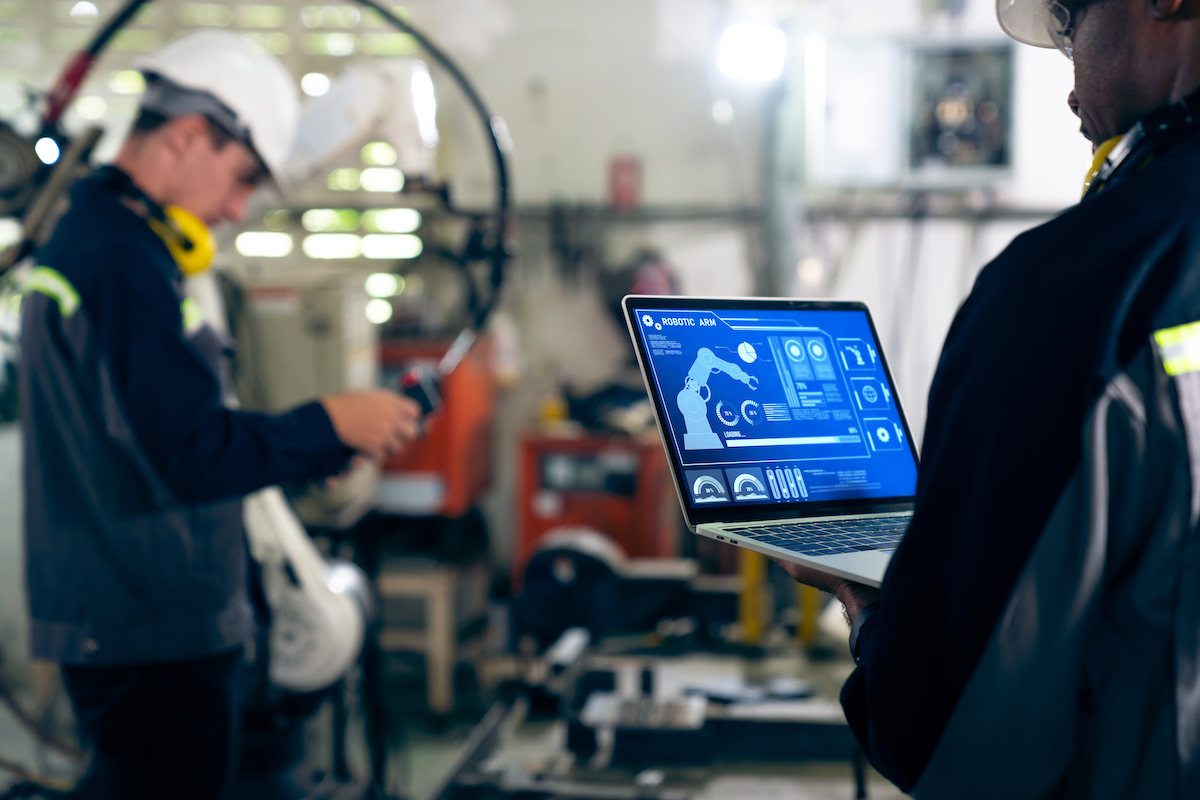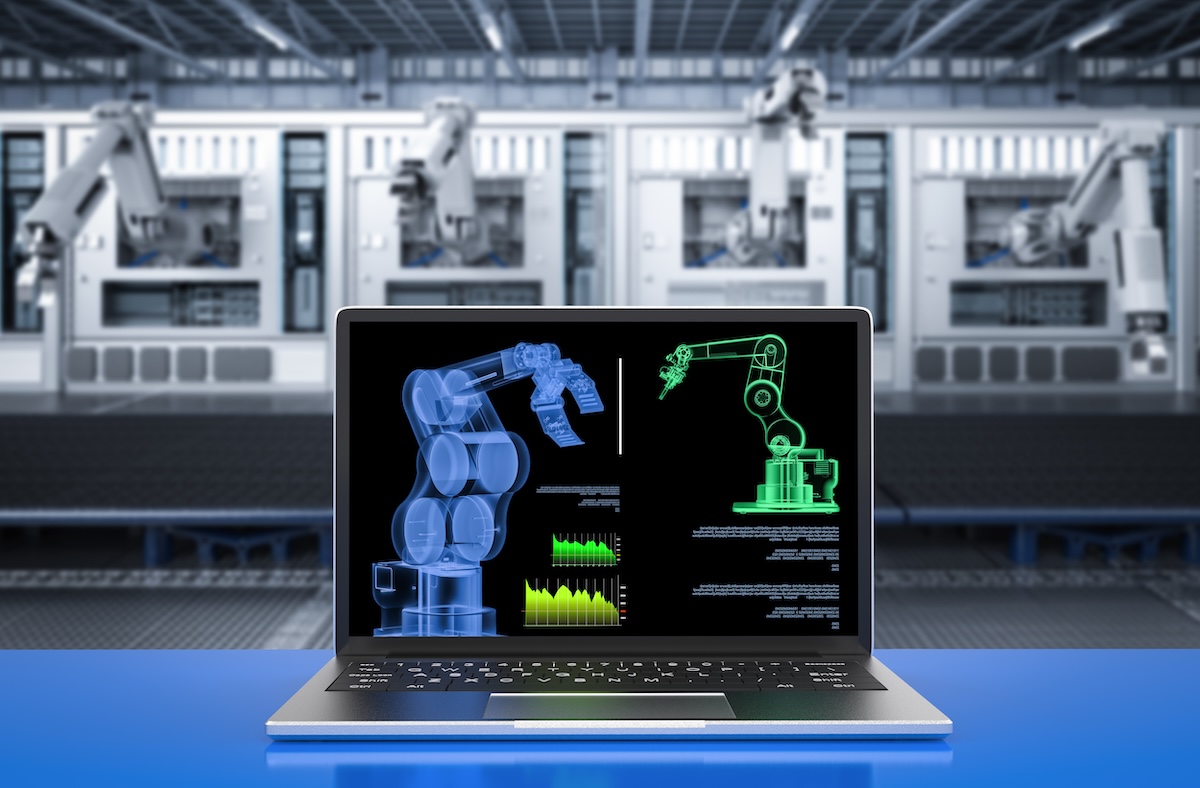How to improve manufacturing energy efficiency with analytics software
|
Getting your Trinity Audio player ready...
|
Manufacturing processes consume a lot of energy, with chemicals, paper and pulp, metal, and food manufacturing being the most energy-intensive industries. Yet, more and more manufacturers are putting energy use optimization on their agendas for cost-saving and sustainability purposes. Moreover, many manufacturing companies must now comply with energy efficiency standards and regulations, such as the Energy Independence and Security Act in the US or the Ecodesign Directive in the EU.
However, transitioning to energy-efficient production poses significant challenges because manufacturing processes are inherently complex and involve equipment with varying energy requirements. Moreover, manufacturing businesses often lack real-time visibility into their energy usage which prevents them from identifying areas for improvement or assessing the impact of energy-saving initiatives.
Fortunately, modern manufacturing technological advancements offer solutions to these challenges. In this article, we explain how equipping manufacturing software with advanced analytics can promote energy-efficient production.
8 analytics capabilities for manufacturing energy management
Energy management functionality can be incorporated into comprehensive manufacturing solutions, such as production monitoring systems, manufacturing execution systems, or green manufacturing software. Alternatively, manufacturers can opt for dedicated custom solutions specifically designed for energy management, known as smart energy manufacturing software, industrial energy efficiency software, or energy optimization solutions.
By choosing to develop such systems from scratch, manufacturers can make sure such software precisely aligns with their workflows and energy management needs. Importantly, custom software can be equipped with robust data fusion and processing techniques, including ML/AI-driven analytics, as well as automation, easy integration, and scalability features.
KPI monitoring
Analytics solutions can monitor established energy efficiency KPIs in a manufacturing facility. By collecting and analyzing data from energy usage sensors on machinery and equipment, such as compressors, pumps, furnaces, lighting, and refrigeration systems, they can provide a comprehensive, real-time overview of energy consumption and operating conditions. The metrics measured by energy management solutions can include energy consumption by process stage or per unit of production output, the utilization rate of key manufacturing equipment, energy consumed per square foot of illuminated area, and peak demand during specific time intervals.
Identification of energy consumption patterns
Energy management software establishes a baseline for standard operating patterns by analyzing historical production data. Moreover, when integrated with ML algorithms, it can create predictive models that correlate energy consumption with different variables, such as production volume, time of day, and environmental conditions, to help determine optimal energy usage patterns in various types of production operations. Besides, the software allows administrators to set customizable energy consumption thresholds based on historical data, industry benchmarks, or regulations.
Root cause analysis for anomalies
In case of deviations in energy usage patterns, manufacturing energy management software can utilize advanced analytics to identify its root causes, including hidden ones. For instance, if there are HVAC energy usage spikes, the software analyzes temperature settings, system runtime, external conditions, and equipment efficiency, which can reveal that inaccurate sensor readings and extreme weather conditions are at fault for unnecessary energy consumption. This information allows administrators to promptly come up with corrective actions, such as recalibrating sensors and adjusting temperature set points.
Custom alerts and notifications
An energy management solution can be configured to send various alerts based on the severity of deviation from the established energy usage pattern to ensure a fast response. For instance, if the software detects energy consumption 10% higher than the historical average, it issues a warning. If it exceeds 30%, it sends a critical alert.
For critical alerts, the software can follow escalation protocols. If the initial notification is not addressed within a certain timeframe, it’s sent to higher management levels or other relevant parties. software can send more urgent notifications through multiple channels such as email, SMS, or messengers.
Energy usage optimization strategies
Energy management solutions powered by ML algorithms can use historical data to forecast potential energy consumption deviations. Besides, they can establish the relationship between energy consumption and production output to help manufacturers identify optimal production scenarios and balance out energy efficiency with meeting production goals.
For example, a manufacturing analytics solution can process data on production schedules, energy consumption, and prices. It can detect the most energy-intensive manufacturing processes, such as melting and smelting, and recommend running these operations during off-peak hours to lower energy costs.
In addition, such software can identify that specific configurations of a manufacturing line result in lower energy consumption per unit produced. In particular, it can help manufacturers determine the optimal speed of conveyor belts by analyzing energy patterns and real-time demand and adjust it to varying production demands. So, during peak production times, the conveyor belts can run at a higher speed, and during periods of lower demand, they can operate at a reduced speed. This way, manufacturers can achieve significant cost savings without compromising their production targets.
Automated energy-saving
By integrating with various sensors, devices, and systems within a manufacturing facility, energy management software can be set up to automatically trigger actions required to optimize energy usage and respond to changes in production conditions in real time. For example, the software can adjust lighting, heating, ventilation, and air conditioning settings based on real-time area occupancy and environmental conditions or even shut down equipment automatically when it’s not in use.
Optimized data visualization
The interfaces of manufacturing energy management software can be customized to contain company-specific terminology and align with its specific workflows. Besides, manufacturers can include visual aids, such as charts, graphs, and dashboards to help users interpret complex energy data. If the manufacturing facility is large and divided into multiple zones, custom energy management software can also feature interactive maps highlighting energy consumption trends in different areas.
Additionally, these solutions can offer advanced search functionalities, allowing production managers to filter data according to specific criteria, such as time periods, production shifts, or equipment categories.
What’s more, custom manufacturing software can even enable users to create personalized dashboards tailored to their specific roles and responsibilities. For example, a production manager can integrate widgets that show the correlation between production levels and energy consumption to get an overview of real-time production output, energy intensity per unit, and machine-specific energy usage metrics. At the same time, the manager of a financial department would be primarily interested in energy cost breakdown and cost-savings metrics that reflect the financial impact of energy efficiency initiatives.
A feedback loop for continuous improvement
Energy management software with advanced analytical capabilities provides valuable insights into the results of energy-saving initiatives to help manufacturers make them more efficient. Moreover, manufacturers can model different scenarios with the help of sophisticated analytics techniques, such as process changes, equipment upgrades, or the adoption of new technologies, to evaluate their potential impact on energy efficiency.
Wrapping up
The shift towards energy-efficient manufacturing is becoming more noticeable. Governments worldwide are increasingly introducing measures to achieve efficient energy usage. Furthermore, with growing environmental awareness, more customers favor manufacturers who actively implement green initiatives. So, choosing energy-efficient practices not only aligns with eco-friendly values but also improves a brand’s reputation and fosters customer loyalty.
Given these trends, custom manufacturing software can become a powerful tool for efficient energy management. As a result, it can help manufacturers decrease expenses and environmental impact and gain a competitive edge.
About the author
 This article was written by Natalya Butkevich, a Technology Research Analyst at Itransition, a software development company headquartered in Denver.
This article was written by Natalya Butkevich, a Technology Research Analyst at Itransition, a software development company headquartered in Denver.



